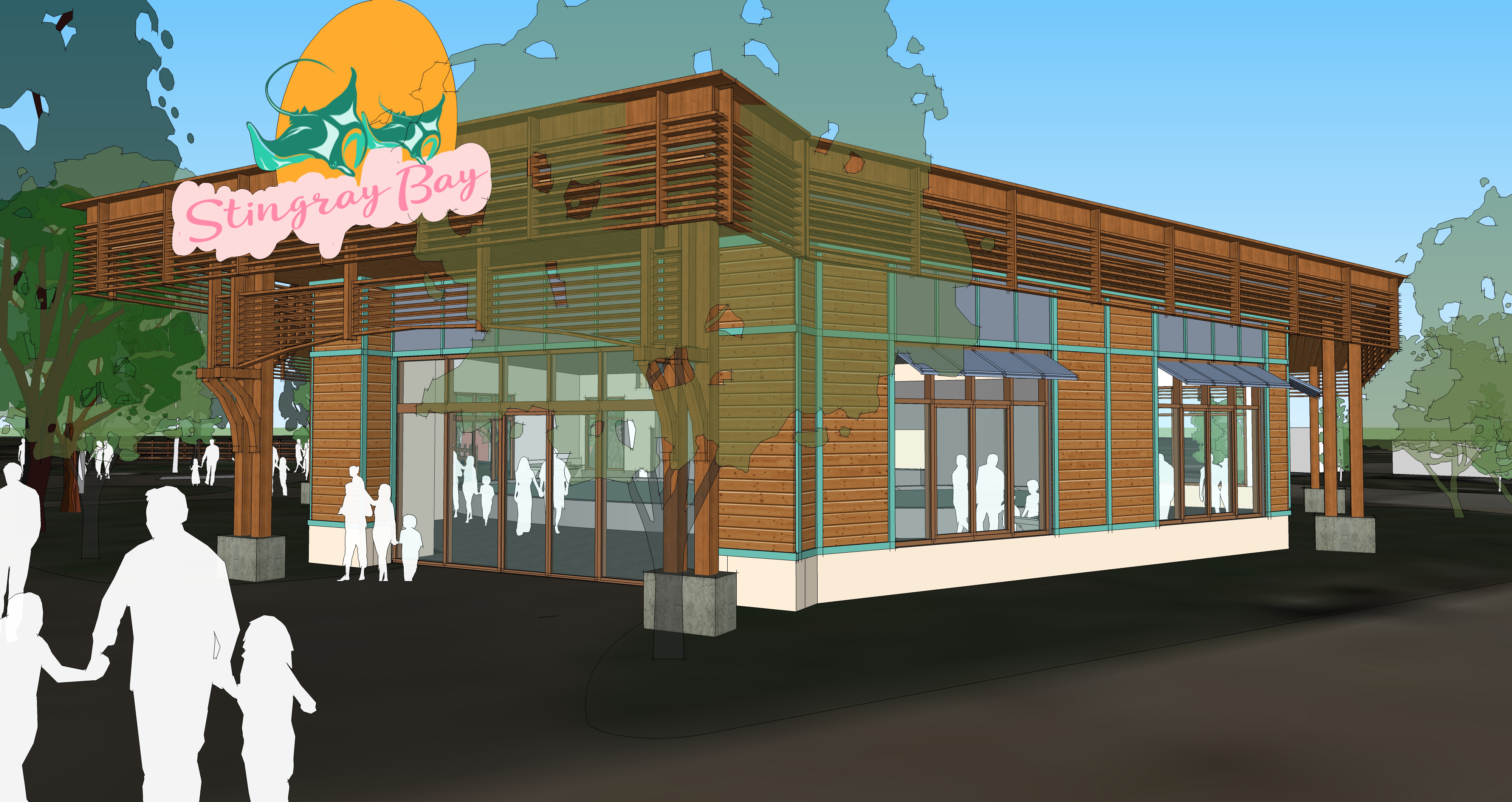How do you think a stingray feels? Slippery like soap? Scratchy like a tree trunk? There’s only one way to find out — at the Kansas City Zoo’s new touch tank, Stingray Bay. The Zoo recently broke ground on this brand new exhibit, which is set to open in May 2018.
Guests will have the opportunity to dip their hands into a shallow pool and discover the unique texture and movement of both cownose and southern stingrays. You’ll be able to tell the two species apart because cownose rays have a unique feature—long, pointed pectoral fins that separate into two lobes in front of their high-domed heads. A crease in the lobes and a notched head create a cow-nose likeness that gives these rays their name. Southern stingrays, however, have large, flat, diamond-shaped disks without distinct heads. In addition to stingrays, the tank will also be home to one of the smallest species of sharks, white-spotted bamboo sharks. These sharks are known as “cat sharks” because the barbels, or sensory organs near their mouths, resemble cat whiskers.
Stingray Bay will be located between Helzberg Penguin Plaza and Discovery Barn and will be open year-round. During the hotter months of the year, the sides will be opened and overhead fans will keep the exhibit cooled for guests. When it’s colder, the sides can be closed and the building will be heated.
The touch tank itself will contain about 20,000 gallons of water and will be shaped like a kidney bean. It will be shallower at the outer edge and built at a height that will provide access to everyone. The center of the pool will be deeper, so animals that choose not to be touched have a place to rest.
One of the exhibit’s most important features will be located behind the scenes. A state-of-the-art water filtration system will ensure that the tank’s water stays clean and clear, providing a healthy habitat for its inhabitants.
Entrance to Stingray Bay will be included with regular Zoo admission. There will, however, be a limited number of feeding opportunities daily for an additional fee. The project is estimated to cost approximately $3 million to complete, funded by private donations and the Zoological District. Splash into fun at the Kansas City Zoo!
